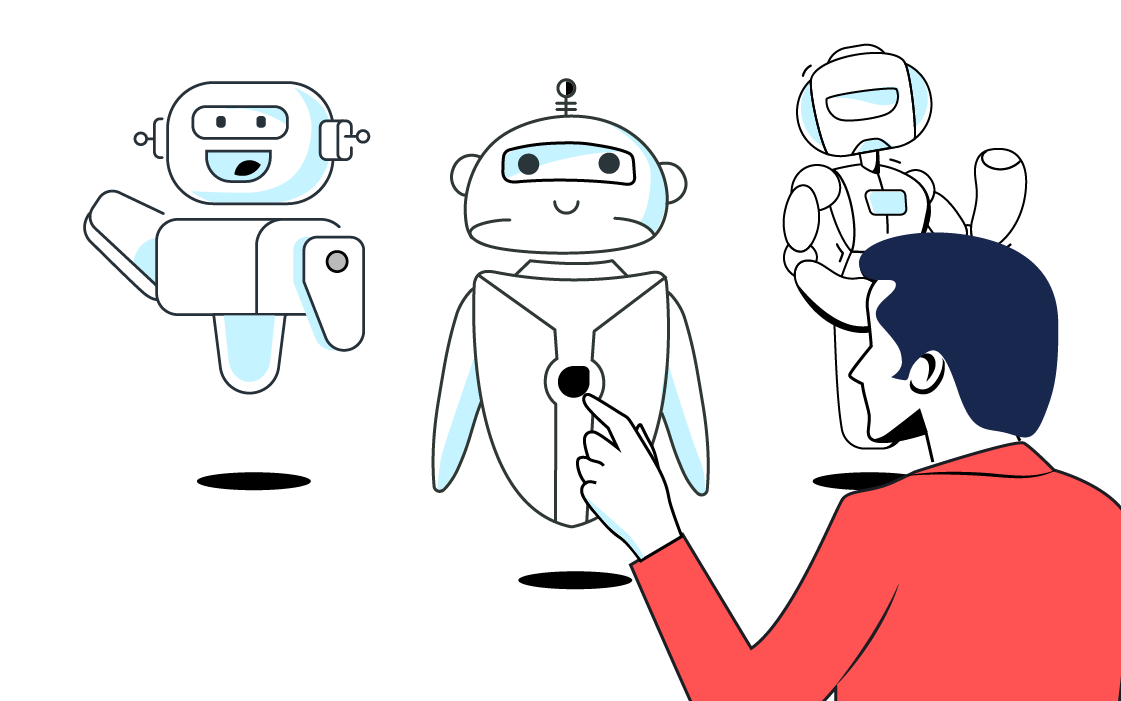With the development of chatbots, the relationship between consumer and brand engagement was radically revolutionized. Chatbots swept over organizations like a fireball, able to mimic conversations and provide instant, digital interaction. Gartner also forecasted that by 2021, 50 percent more businesses will spend on the bot and chatbot development than on traditional mobile app development.
Chatbots are being used most effectively by businesses outside of industries. On the one hand, Chatbots serve as 24/7 customer support representatives for one company while also assisting another by providing data points that may be used to predict user behavior. However, the technology, programming, and type of chatbot used are determined mainly by the consumer base that it will serve. If you’re someone willing to enter this domain, then you can find AI conversational chatbot course that will help you build your career.
Support Chatbots
Support chatbots, designed to handle a specific problem, require context awareness, personality, and multi-turn functionality. They should guide a user through a business process and respond to a wide range of frequently asked questions. Most support chatbots employ machine learning and natural language processing to conduct tasks. You can begin with what machine learning is to enter this domain.
Menu/button-based chatbots
The most basic sort of chatbot now in use is based on a menu or a button. Most of the time, these chatbots are glorified decision tree hierarchies displayed to the user as buttons. Like the automated phone menus we all deal with regularly, these chatbots demand the user to make many choices to get to the ultimate response.
While these chatbots are adequate for answering FAQs, which account for 80% of support requests, they fall short in more complicated scenarios where there are too many variables or too much expertise to forecast how users should confidently arrive at specific situations responses. It's also worth mentioning that menu/button-based chatbots are the slowest to bring users the value they want.
Scripted/Quick reply bots
This form of chatbot is designed to connect with the end consumer using a predetermined knowledge base and technological abilities that can only reply to fixed commands, as the name suggests. The inquiries must be aligned with the language program in the chatbot in this manner.
Skills Chatbots
It's a one-turn chatbot that doesn't need much context information. It can just do an action by obeying an instruction. With its speech recognition capability, a skills chatbot, for example, can quickly obey the order "turn on the lights." A sophisticated NLP function is required for a skills chatbot and the ability to work quickly. Though Alexa is a bot that may be divided into numerous sorts of chatbots, it has a beautiful skills chatbots feature.
Linguistic Based (Rule-Based Chatbots)
A linguistic chatbot may be the correct answer for you if you can anticipate the sorts of queries your clients will ask. If/then logic is used by linguistic or rules-based chatbots to build conversational flows. You must first establish the language requirements for your chatbots. Conditions can be set to evaluate the words, their order, synonyms, and other factors. If the inbound inquiry meets the requirements set by your chatbot, your clients will receive prompt assistance.
It is, however, your responsibility to verify that each permutation and combination of each question is defined; otherwise, the chatbot would be unable to comprehend your customer's input. This is why, despite its widespread use, language models can take a long time to evolve. These chatbots require rigidity and specificity.
Natural Language Processing (NLP) Chatbots
Chatbots are widely regarded as one of the essential AI applications. At its foundation, a chatbot uses Natural Language Processing (NLP), an Artificial Intelligence technology that converts user input such as text or speech into an intent. In NLP chatbots, messages are categorized, and then language parsing is performed to get variables for an answer.
Conclusion
Many people categorize conversational bots as a different category. However, with today's user demands and technology, any bot must converse with a person in some form. As a result, all bots are talking chatbots in the end.
Also read about:
The next generation of marketing
What Are the Benefits of Using a Vitamin C Face Cream
How to Finding Long Lost Friends With BestPeopleFinder

